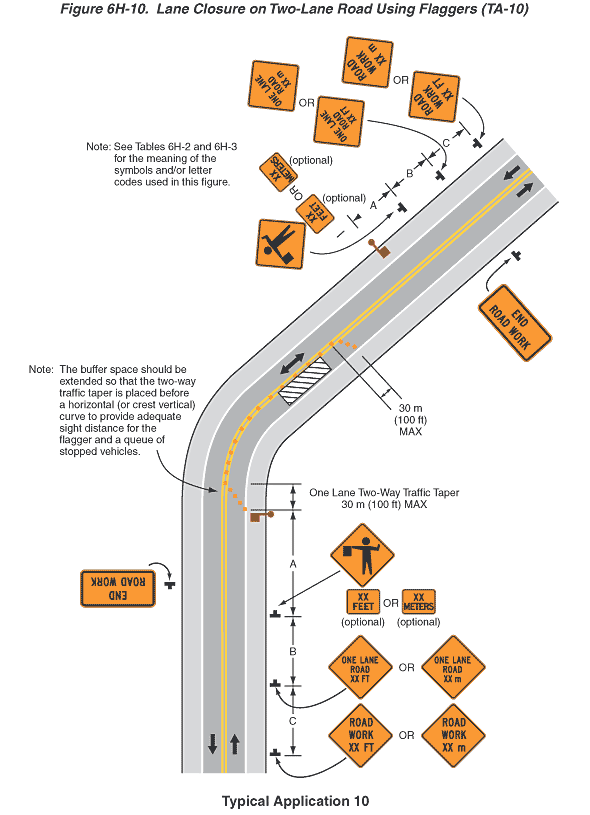
Figure 6H-10. Lane Closure on Two-Lane Road Using Flaggers (TA-10)
This figure illustrates lane closure on a two-lane road using flaggers. A legend under the figure states that this is Typical Application 10. A note states "Note: See Tables 6H-2 and 6H-3 for the meaning of the symbols and/or letter codes used in this figure."
A vertical two-lane roadway is shown, the top half curving to the right. Downward-pointing black arrows in the left lane and upward-pointing black arrows in the right lane denote the direction of travel. The opposing lanes are shown separated by a solid double yellow line. A shoulder is shown to the right of each direction of travel. The shoulders are shown separated from the travel lanes by a solid white line.
At the bottom of the figure and to the right of the shoulder of the right lane, a black inverted "T" is shown denoting a sign. The sign is shown as a diamond-shaped orange sign with a black border and the words "ROAD WORK XX FT" in black or its metric alternate "XX m." This sign is shown at a dimensioned distance C in advance of another diamond-shaped orange sign with a black border to the right of the right shoulder. It shows the words "ONE LANE ROAD XX FT" in black or its metric alternate "XX m." This sign is shown at a dimensioned distance B in advance of a sign assembly to the right of the right shoulder. This assembly is shown as composed of a diamond-shaped orange sign with a black border and a black symbol of a flagger above a horizontal rectangular orange supplemental plaque labeled optional with a black border and the distance "XX FEET" in black or its metric alternate "XX METERS." This sign assembly is shown at a dimensioned distance A in advance of a red symbol for a flagger, shown on the right shoulder. Beginning where the flagger is shown and at the white line separating the shoulder from the right lane, a series of orange squares, denoting channelizing devices, are shown tapering in to the solid double yellow line separating the opposing traffic lanes. This taper is denoted as a "one lane, two-way traffic taper" at a dimensioned distance of 30 m (100 ft) MAXIMUM. Beyond this area, the channelizing devices continue along the solid double yellow line as the road is shown curving to the right. A note states "The buffer space should be extended so that the two-way traffic taper is placed before a horizontal (or crest vertical) curve to provide adequate sight distance for the flagger and a queue of stopped vehicles."
Beyond the curve, the work space is shown in the right lane, represented by a vertical rectangular black and white diagonally striped box. The channelizing devices are shown continuing along the solid double yellow line to a point one device beyond the work space and then tapering back to the right shoulder for a dimensioned distance of 30 m (100 ft) MAXIMUM. Near the top of the figure, a horizontal rectangular orange sign with a black border is shown to the right of the right shoulder with the words "END ROAD WORK" in black.
At the top of the figure, to the outside of the left lane, the same three diamond-shaped orange signs are shown at the same dimensioned distances in advance of another flagger symbol in advance of the work space. Beyond the work space and roadway curve in the left lane, another End Road Work sign is shown.
